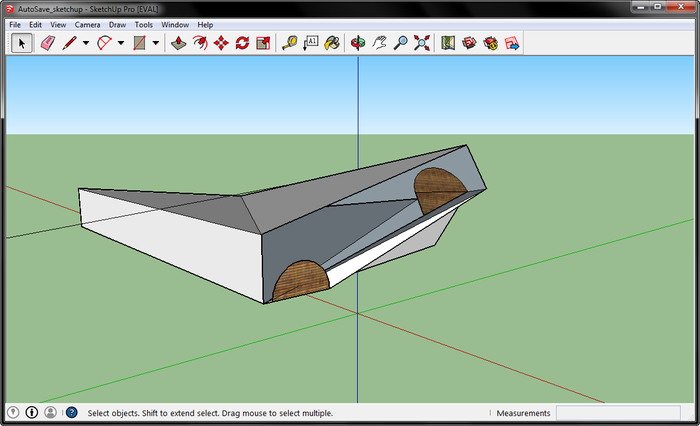

It's a genius extension for creating layers and scenes in LayOut. The Super Section plug-in has saved me tons of steps when creating construction documents. Photograph of the nearly completed 2011 X Games Street Course
Sketchup 2015 reviews pro#
The 2011 X Games Street Course designed in SketchUp Pro It was exhilarating working as an art director with a crew of 20+ talented concrete, wood, and steel workers to help realize a 10,000 square-foot sculpture that was about to be skated by the world’s best athletes on live television in front of millions of viewers.
Sketchup 2015 reviews free#
I had free reign not only to design the park, but also to be on site to finalize every exacting detail, right down to the grass coming out of the faux cracks and the authentic graffiti tags decorating the brick walls. It has to be the 2011 X Games Street Course held in Los Angeles, CA. Out of all of 'em, what has been your favorite project? Rail heights, ledge angles, grind edge materials, seam and joint placement: these are just a few of the things that can make or break a perfect skate spot.Ī perfect example of ‘contractor’s kink.’ No space for speed, a large seam in the concrete, and a handrail that’s too high. This knowledge can only be gained through experience skating a wide variety of terrain. There are many nuances to creating a well-skating park. There is something commonly referred to as ‘the contractor's kink.’ This refers to the worst placement of seams and uneven skating surfaces that general contractors and architects unknowingly design into skateparks. How does being a skateboarder and an architect influence your park design in comparison to an architect who doesn’t skateboard? Co-designers: Brian Harper & Ryan Johnson The 2013 Global X Games Street Course held in Munich, Germany is one of the riders’ favorite courses to date. I refer to this process as 'Flow Analysis': the study of spatial relationships between skatepark elements. As I am creating parks, I am constantly thinking about distances, heights, gaps, angles and materials to determine proper spacing within a given boundary. You need to be able to generate enough speed to take you from one feature to the next with a minimal amount of pushing and without running into other obstacles. However, the one thing that all skaters can agree on is flow. Some enjoy transitions like pools and halfpipes, while others skate on flat-ground and never touch transition. There are many things that go into a good design, all of which cater to different types of skaters. I’m attending the Art Institute of Portland for my bachelor’s in Industrial Design and have tried several big name 3D modeling softwares, but SketchUp seems to be the only one that works with my brain. The speed and no-nonsense way of modeling had me hooked. This was back in 2006 and I’ve been using it ever since. My dad uses SketchUp for woodworking and suggested I give it a try. The 2012 X Games Street Course designed in SketchUp Proīefore SketchUp, I had spent years and countless hours drafting skateparks and ramps by hand. He also shared some modeling advice, so even if skateparks aren’t your thing, we still think you’ll take away some rad SketchUp tips. Dug is an active member of the SketchUp community, and we spoke with him recently to learn more about his insane collection of skatepark and ramp designs. Thanks for reading and sketching with us all these years - come on over to the new SketchUpdate blog to keep on scrolling!ĭug Ketterman is a world renowned skatepark designer with an impressive resume of projects under his belt, including multiple X Games courses. While you won’t find posts about those products on the new blog, you can look forward to many new articles about SketchUp tutorials, 3D Warehouse content, extensions, developer tools, and a lot more. Over the years, we’ve had lots of posts about Google Earth and Building Maker, two products that are no longer part of the SketchUp family. We’ve moved the majority of SketchUpdate posts to the new site, but not all of them.
Pretty soon, though, we’ll be redirecting these articles to our new blog.

It’s been almost three years since we’ve moved on from Google, so we figured it was about time to bring the blog over to our own website.įor the next few weeks (while our new blog is in beta), you’ll still be able to read posts here on Blogger. Since 2007, the SketchUpdate blog has been using Google’s Blogger platform for publishing articles about SketchUp. If you’re reading this, you’re officially missing out on new posts at the SketchUpdate blog’s new home:.


 0 kommentar(er)
0 kommentar(er)
